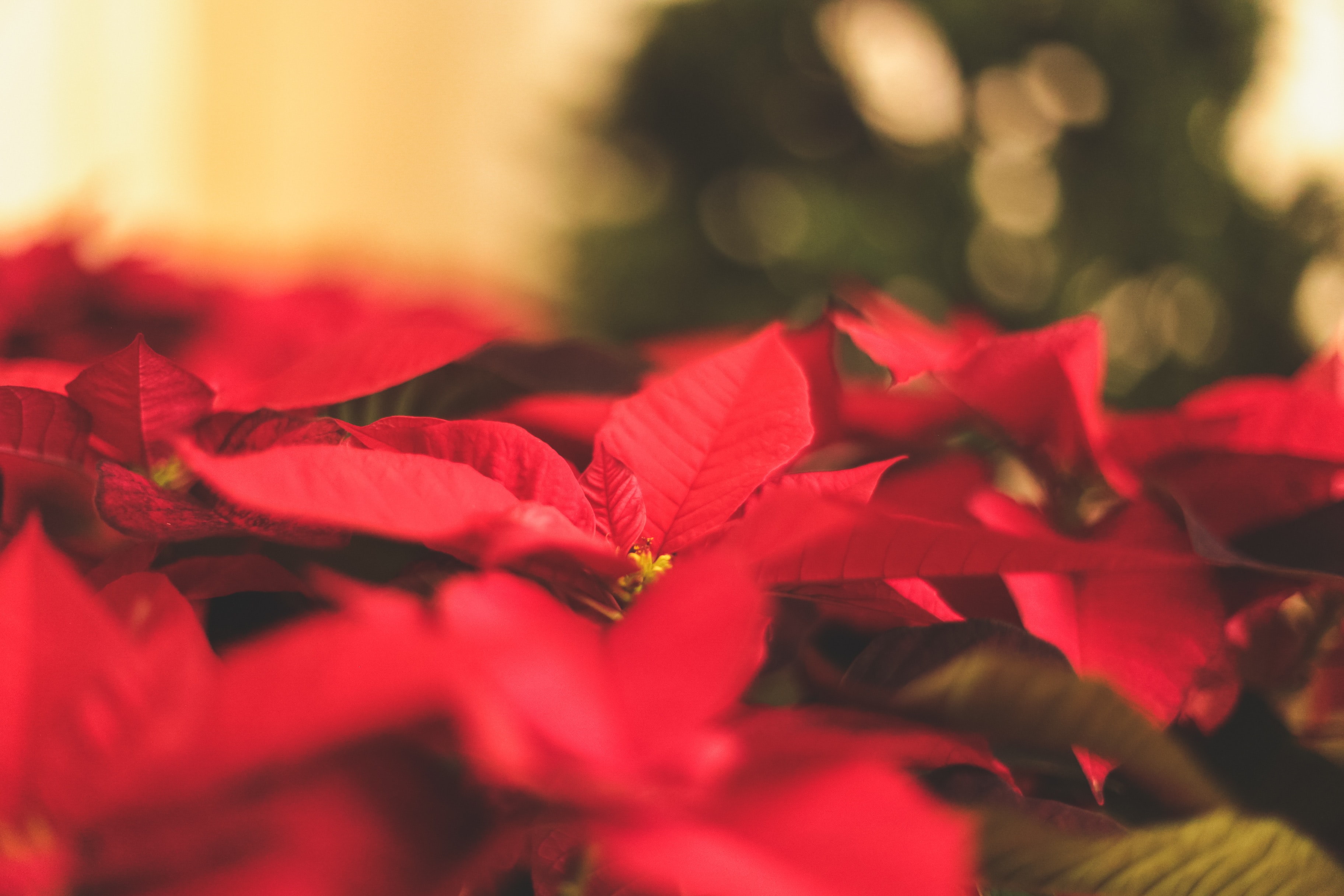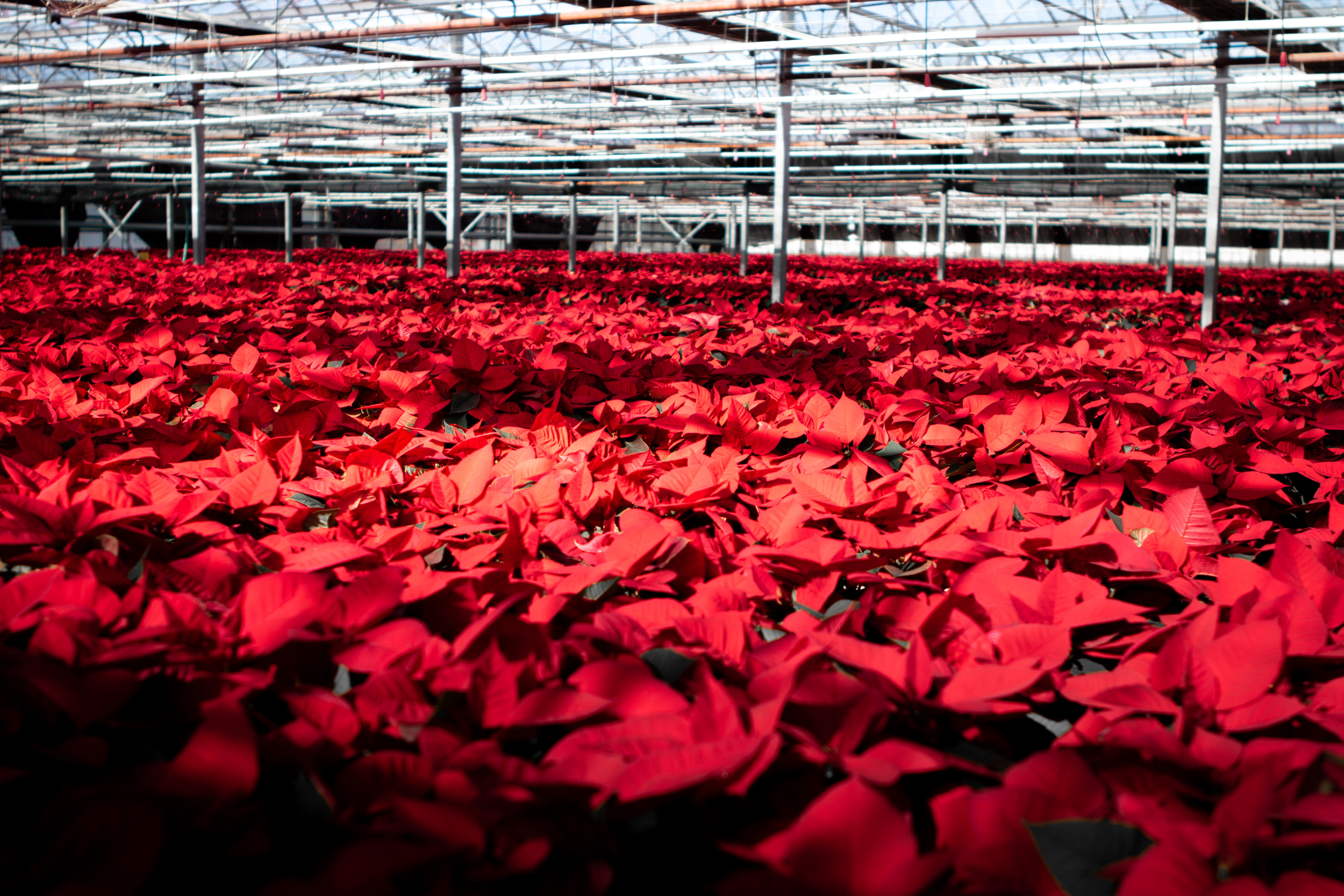Poinsettias, renowned for their vibrant red bracts, have become a cherished addition to the Tasmanian horticultural scene. These classic plants, known for their festive appearance, require specific care and conditions to thrive. In Tasmania, where daylight varies significantly throughout the year, growers have adopted innovative techniques to ensure the optimal development of these striking flowers.

Understanding Poinsettias:
Poinsettias, with their iconic red bracts, are a staple in holiday decorations and landscapes. These plants, native to Mexico, have adapted well to various climates, including the unique conditions found in Tasmania. The distinctive red coloration is a result of modified leaves, creating a visually stunning display during the festive season.
Daylight Sensitivity:
One of the most intriguing aspects of poinsettias is their sensitivity to daylight. The development of the characteristic red bracts is closely tied to the length of daylight exposure. In Tasmania, where daylight duration varies significantly between seasons, growers have embraced controlled environments to manipulate light exposure and ensure a consistent and vibrant display.
Greenhouse Cultivation in Tasmania:
To address the daylight sensitivity of poinsettias, Tasmanian growers have turned to greenhouse cultivation. These controlled environments provide an ideal setting for regulating light exposure, temperature, and humidity. However, what sets Tasmanian poinsettia cultivation apart is the use of blackout techniques to simulate specific light conditions.
Artificially Blackened Greenhouses:
In Tasmania, where the long days of summer contrast sharply with the shorter days of winter, growers have adopted a unique practice to enhance the coloration of poinsettias. During the critical period when the red bracts develop, the greenhouses are artificially blackened out. This involves covering the greenhouse with light-blocking material to create an environment that mimics shorter daylight hours.

The Process:
- Monitoring Daylight Hours: Tasmanian growers carefully monitor the changing daylight hours and determine the optimal time to initiate the blackening process
- Covering the Greenhouse: Once the desired timing is identified, the greenhouse is covered with light-blocking material such as shade cloth or black tarps. This effectively reduces the amount of sunlight reaching the poinsettias. (home gardeners can simulate this effect by reducing daylight hours and putting their plant within a dark cupboard)
- Regulating Temperature and Humidity: Alongside controlling light exposure, growers closely manage temperature and humidity levels within the greenhouse to create a favorable environment for poinsettia growth.
- Observing Color Development: As the poinsettias adapt to the simulated shorter days, the iconic red bracts begin to develop. This process typically takes several weeks; growers carefully observe the plants to ensure the desired coloration.
Watering Tips:
In addition to light management, successful poinsettia cultivation in Tasmania involves careful attention to watering. Poinsettias prefer slightly drier conditions, and over-watering can be detrimental. You will notice that we have found success by adopting a method of watering from underneath. By adding a small amount of water to the saucer beneath the pot, the plants can absorb moisture as needed, preventing the risk of over-watering (It is important to ensure the saucer dries in between watering schedules).
Conclusion:
The cultivation of poinsettias in Tasmania showcases the intersection of horticultural innovation and environmental adaptation. By harnessing the day-length sensitivity of these captivating plants and employing artificially blackened greenhouses, Tasmanian growers produce poinsettias with brilliant red bracts, creating a festive and visually striking addition to the local floral landscape. This unique approach to cultivation, coupled with mindful watering practices, exemplifies the creativity and dedication of horticulturists in Tasmania, contributing to the ongoing fascination with this holiday favorite.

